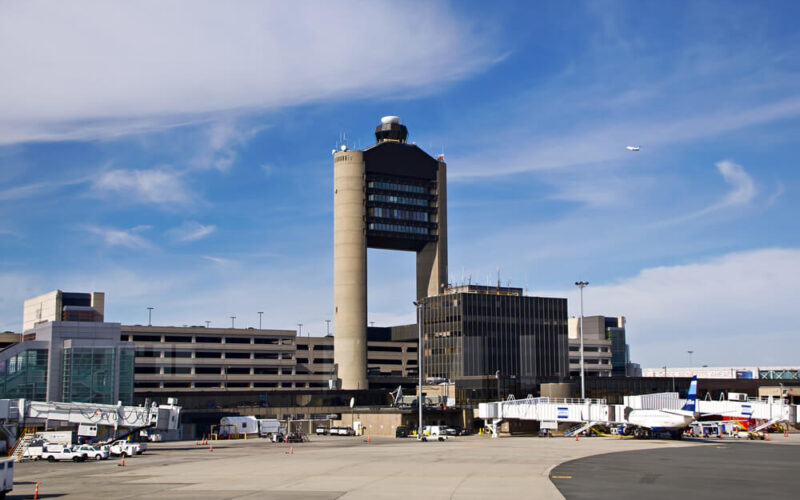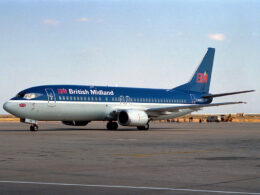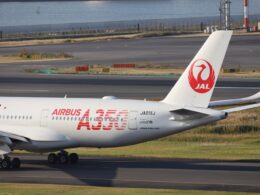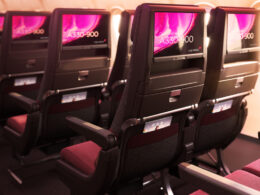Travel between Europe and North America has become a cash cow for many full-service carriers, especially for airlines located within Europe. With domestic battles raging on against low-cost carriers, transatlantic flights are a safe way to earn money and balance out the pressure put on by the market situation in Europe.
For example, Lufthansa (LHAB) (LHA) highlighted in its Q3 2019 report that while short-haul business was negatively impacted by “price erosion due to overcapacities throughout the market and the general economic downturn in the Group’s home markets,” the long-haul segment performed “well, particularly on connections to North America.” British Airways, meanwhile, served 34 destinations in North America, boasting “the largest network of a European carrier,” and targets the transatlantic capacity to increase by three to four percent in the next five years.
On the other side of the spectrum, low-cost long-haul carriers, namely Norwegian Air Shuttle, grew massively over the past few years in the same market. However, the airline has hit a wall – a wall of financial difficulties. Norwegian is greeting 2020 with massive cuts, including the sale of its Argentine subsidiary and long-haul route cuts from Denmark and Sweden to the U.S. and Thailand.
At the same time, on October 11, 2019, the low-cost carrier announced that it will increase Summer 2020 capacity on “key United Kingdom – United States routes”, including flights from London-Gatwick (LGW) to Austin, Denver, San Francisco and Tampa.
Yet Norwegian is not the only one cutting ribbons on increased frequencies or new routes between the Old Continent and North America. With new route announcements, one city on the East Coast of the United States stands out – Boston.
But why Boston and its airport, Logan International (BOS)?
State of Logan International
There are a few reasons why Boston is potentially becoming a hotspot for transatlantic travel. First of all, Boston’s Metropolitan area is one of the largest in the United States – the 10th largest, according to the Boston Globe. Slowly, but surely, though, it is growing. From 2010 till 2018, the population grew from 4.55 million to 4.87 million. Economically, the metro area of the capital of Massachusetts was the fifth richest in the United States in 2018 with a median household income of $82,380 per year. The nation-wide average was $57,617.
But the main issue the city and the state as a whole has is its relatively low international tourist numbers. Only 2.5 million international visitors visited Massachusetts in 2018, while 27.6 million domestic travelers arrived to the state. Even then, most domestic visitors arrived by driving to the state – 73.8% of them, according to an annual report prepared by the Massachusetts Office of Travel & Tourism.
Neither is Logan International Airport (BOS) a household name among airports on the East Coast as an airport. Just 190 miles (306 kilometers) south, there are three major airports that see much larger passenger numbers: John F. Kennedy International (JFK), LaGuardia (LGA), and Newark Liberty (EWR) with 61.9, 30 and 46 million passengers in 2018, respectively. Logan International finished 2018 with 40.9 million ‒ a record year for the airport.
Nevertheless, the airport, unlike the three located in New York, is still open for more airlines and new destinations. In the Fiscal Year 2019, ended June 30, 2019, the airport saw 14,347 more flights compared to FY2018. But international traffic, compared with domestic traffic, is still minor. As of November 30, 2019,, 31.3 million passengers crossed the airport’s gates on domestic flights, while only 7.6 million arrived from overseas, meaning 20% of the traffic in BOS is comprised of international arrivals or departures YTD. Despite of this fact, international traffic is on the rise – 8 million travelers departed or arrived from overseas in FY2019, while the previous year, there were 7.2 million international passengers.
Another advantage for carriers planning new transatlantic connections is the fact that despite its relatively weak international presence, Boston’s domestic network is well developed, including flights to most of the major cities in the United States: New York (EWR, JFK, LGA), Chicago (ORD), Atlanta (ATL), San Francisco (SFO) and Los Angeles (LAX).
Cautionary approach
In 2020, passenger numbers are likely to be on the up once again. Several airlines, both based in the United States and in Europe, have announced inaugural routes or frequency increases from Logan International (BOS). These include American Airlines (A1G) (AAL) , Austrian Airlines, Delta Air Lines, International Airlines Group’s (IAG) own low-cost carrier LEVEL and Scandinavian Airlines System (SAS). Furthermore, jetBlue, the biggest airline in Boston by market share by a postcode (28.5% of total market share in FY2019), announced in April 2019 a new route between London and Boston starting in 2021. It is also mulling other European cities, where passengers “suffer from high fares or mediocre service and those which are effectively controlled by legacy carriers and their massive joint ventures.”
So, airlines are clearly interested in stimulating growth in transatlantic travel from Boston. In addition, the fact that the airport is going through an update of its facilities with a $2.6 billion investment, including seven new aircraft gates at Terminal E, makes Logan International for an attractive business case.
However, simultaneously, carriers are still cautious regarding the potential of the transatlantic market at Massachusetts’ capital.
Flying Pencils
For example, Delta Air Lines is planning to operate six daily connections from Logan International (BOS) to Paris-Charles De Gaulle (CDG), London-Gatwick (LGW), Manchester (MAN), Edinburgh (EDI) and Lisbon (LIS) in Summer 2020. Some of the connections, namely to Edinburgh, Lisbon and Rome, will be seasonal only. Nevertheless, apart from the more frequent services to CDG and FCO, the carrier scheduled its Boeing 757s to fly the transatlantic connections from Boston.
Delta, if no schedule changes occur, will be the only airline operating some of the transatlantic connections, namely to Edinburgh and Manchester. These routes will be monopolized by the Atlanta-based airline.
Similarly, SAS operates six flights per week between Copenhagen (CPH) and Boston (BOS). While previously the service was only a summer connection, starting from September 2020, it will become a year-round service. The Scandinavian flag carrier plans to operate an Airbus A330 during the summer and switch to A321LR during the winter months/year-round connection.
The aforementioned plans by jetBlue would also be operated by an A321LR. The seasonality of Boston shows when comparing the weekly frequencies between the winter and summer seasons: in total, airlines planned 139 transatlantic flights between January 13 and January 19, 2020. Between June 1 and June 7, 2020, when the summer schedules kicks in, the number of flights jumps to 287.
Delta Air Lines will become the number one transatlantic carrier from Logan International (BOS), controlling 26.8% of the total transatlantic market. In addition, the city has a very limited scope of flights to Europe: 28% of flights in 2020 will depart either to London-Heathrow (LHR) or London-Gatwick (LGW). In total, there are 22 destinations in Europe available to Boston residents to choose from throughout the year, including seasonal routes.
While currently Boston is overshadowed by the Big Apple’s airports, the city is in a great place to move out of the shadows. A growing transatlantic route network, including new year-round services and favorable economic conditions in Massachusetts point to the fact that Logan International’s presence should only grow. However, it will not come easy – attracting international tourists, who are the main money spenders, seemingly is not an easy task for the state which saw only 2.5 million overseas visitors throughout 2018, when over 7 million passengers arrived on international flights in the same period.











